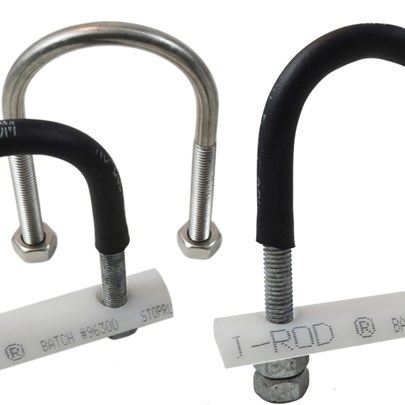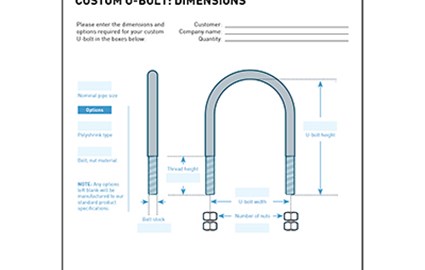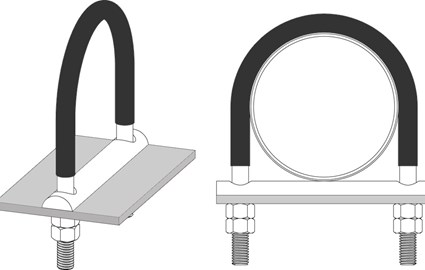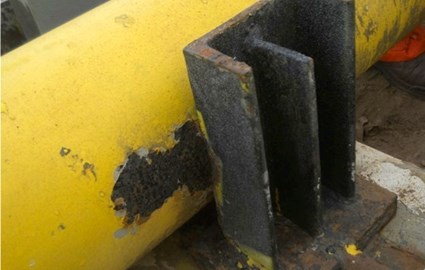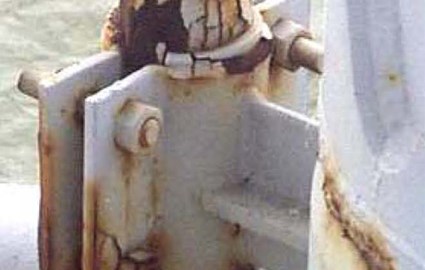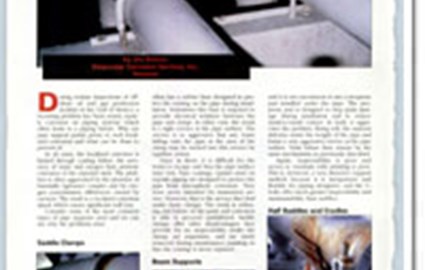WHITE PAPER
These are not the I-Rods you’re looking for
by Steve Young
I-Rod® was first installed in 1989 when it was specified by name in the design of topside piping for the corrosive spray conditions on an offshore platform. Since that initial specification, the number of onshore and offshore companies that specify I-Rod® has grown, but the number of product failures has remained the same: Zero. I-Rod® was developed by corrosion engineers at Deepwater Corrosion Services in Houston, Texas. Though many unscrupulous companies claim to manufacture comparable products, Deepwater is the sole manufacturer of genuine I-Rod® material and Nu-Bolt™ anti-corrosion pipe support systems.
What many suppliers are actually selling are potentially dangerous imitation products made of inferior-quality materials that tend to crush and break once installed. In essence, they create hazardous failed supports by inducing the problem they are supposed to solve. When fakes fail, the damage can be expensive and have even resulted in the catastrophic failure of production pipelines. Sometimes, these imitations are marketed or sold as real I-Rod®. This resource will help you learn identify the fakes in order to avoid costly and potentially dangerous failures. Remember, when in doubt, always look for the I-Rod® logo and batch number printed on the material.
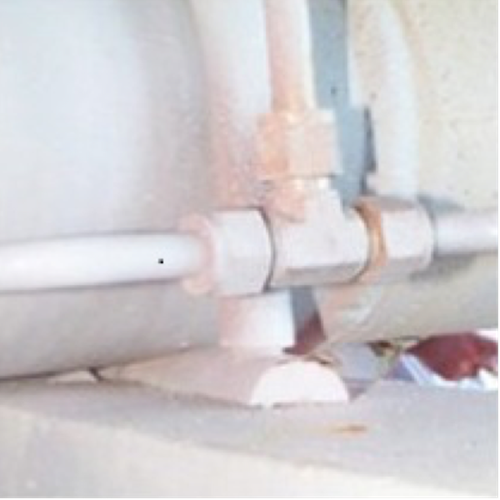
Figure 1 - Failed HMWPE / UHMWPE
1. HMWPE / UHMPWE
I-Rod® is not polyethylene. These inferior materials have a much lower compressive strength than I-Rod® and actually create pipe and pipe support failure.
These two materials often look like I-Rod® (white, half-round plastic) and may even pass themselves off as genuine I-Rod® at first glance. However, they cannot support the load of the production pipe over time. This type of material failure is often called “creep” or “cold flow”. It is the tendency of a solid material to move slowly away from a load, or deform permanently under the influence of a load.
Once creep begins to deform the material, an indentation is created that undermines the pipe support. Atmospheric moisture such as rain, fog, or condensation is drawn by gravity into the indentation where it becomes trapped and does not completely evaporate.
Once the water is trapped in the indentation it continuously submerges the coating. This begins the process of softening the coating on the pipe until it separates from the bare steel. As soon as the bare steel is in contact with water, a corrosion cell is formed and failure is inevitable. The pipe must be repaired and the support must be replaced.
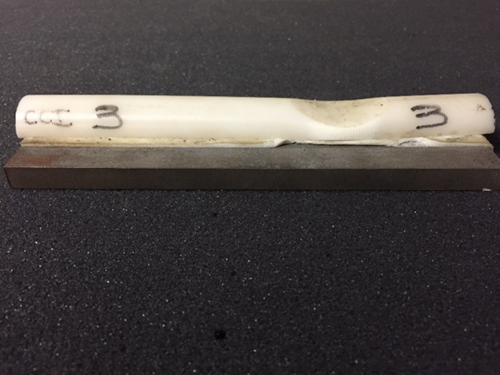
Figure 2 - PTFE (Teflon™) with indentation
2. PTFE (Teflon™)
Like HMWPE / UHMWPE, PTFE also has a much lower compressive strength than I-Rod® and cannot support the load of the production pipe over time and will begin to creep and create a crevice.
PTFE fluoropolymer resin was discovered by DuPont chemist Roy J. Plunkett in 1938 and the Teflon™ trademark was registered to DuPont in 1945. Since the Teflon brand has a such a long history of use and because its name recognition is so widespread, “Teflon” has become a generic term to describe many similar looking polymers. Teflon is exceptionally prone to creep and will typically crack under prolonged exposure to loads in pipe support applications.
Due to their familiarity with the Teflon™ brand name, people will often call any half-round, thermoplastic, white material ”Teflon”. This means many people examine I-Rod® and mistakenly assume that it is Teflon™. As with HMWPE / UHMWPE, once creep begins to deform the material, an indentation is formed where the pipe is in contact with the Teflon (see diagram). Atmospheric moisture such as rain, fog, condensation, etc., is drawn by gravity into the indentation where it becomes trapped. Once the water is trapped in the indentation, it begins the process of softening the coating on the pipe until the coating separates from the bare steel. As soon as the bare steel is in contact with water a corrosion cell is formed and failure is inevitable.
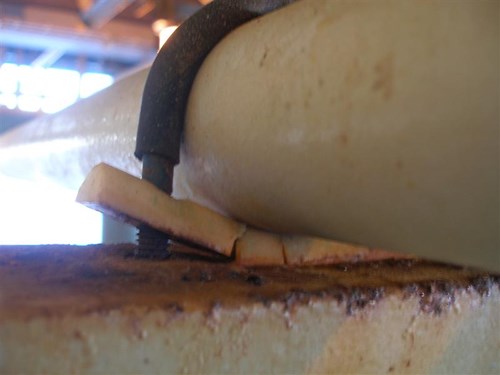
Figure 3 - Cracked injection-molded plastic
3. Injection-molded plastics
I-Rod® is never injection-molded. The proprietary material is extruded as a cylinder and split lengthwise to create its half-round shape, making it many times stronger.
Injection molding is a manufacturing process where material is heated to a liquid state and injected into a mold for hardening to its final shape. The upside to this type of process is that it is inexpensive. The downside is that plastic injected into a mold inherently hardens with an extremely low compressive strength that cannot support the load of the production pipe over time without breaking.
Once the injection molded plastic is crushed by the prolonged load, cracks and crevices form where the pipe is in contact with the broken material (see diagram). Atmospheric moisture such as rain, fog, condensation, etc., is drawn by gravity and capillary action into these cracks and crevices where it becomes trapped. Once the water is trapped, it begins the process of softening the coating on the pipe until the coating separates from the bare steel. As soon as the bare steel is in contact with water a corrosion cell is formed and failure is inevitable.
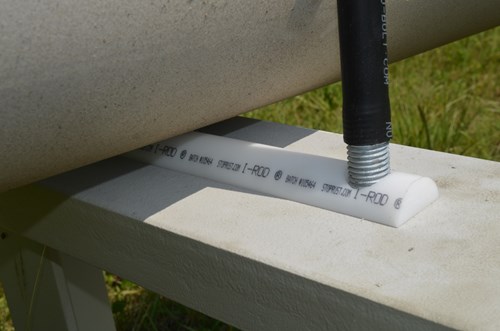
Figure 4 - Genuine I-Rod® will have clearly printed brand information on each piece.
The real deal
Every piece of genuine I-Rod® has the I-Rod® brand name, stoprust.com, and a unique batch number printed directly on every piece.
When you are working on a pipe support design and want to be sure your design will provide the maximum possible lifespan in the harshest of environments, be sure to specify I-Rod® and Nu-Bolt™ brand anti-corrosion pipe supports by Deepwater Corrosion Services. There is no equivalent.
If you are working on a project where I-Rod® has been specified, be sure to purchase directly from Deepwater Corrosion Services or one of our approved vendors. Once the products arrive on your jobsite, the best way to confirm that you received genuine I-Rod® is to look for the logo and batch number on the material. To be sure that you received a genuine Nu-Bolt™ assembly look for the I-Rod® markings and be sure that Nu-Bolt™ is printed on the polyshrink coating on the U-bolt.

